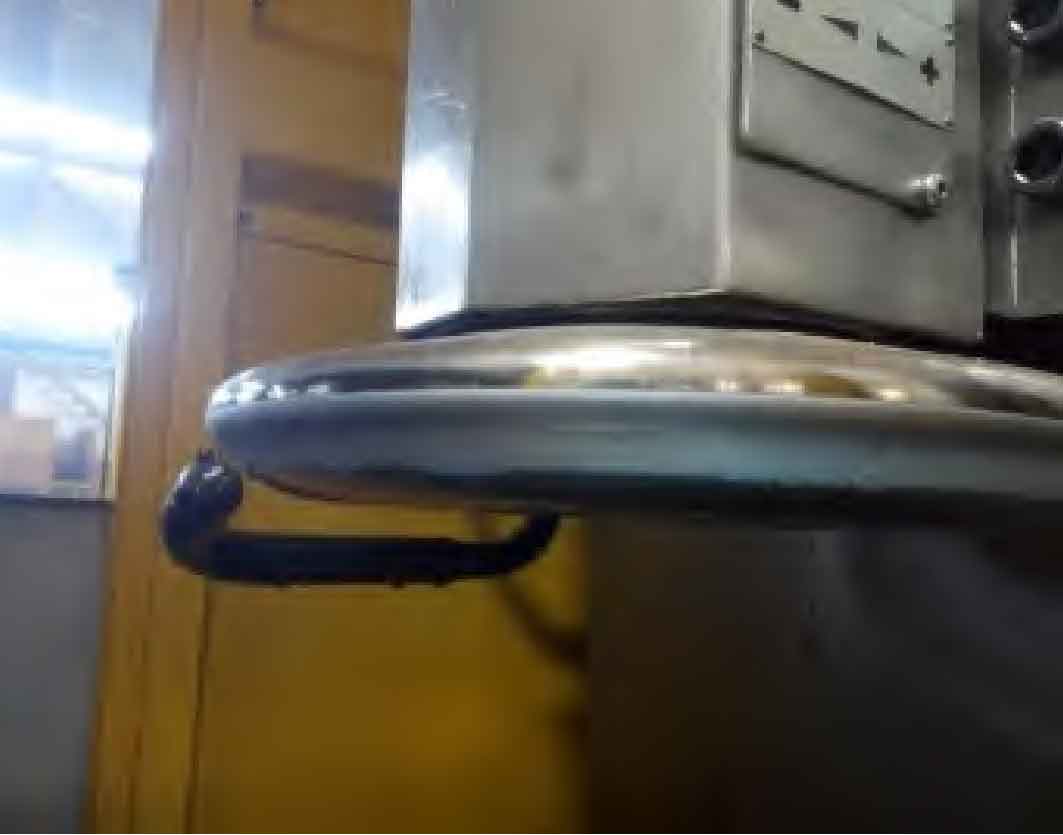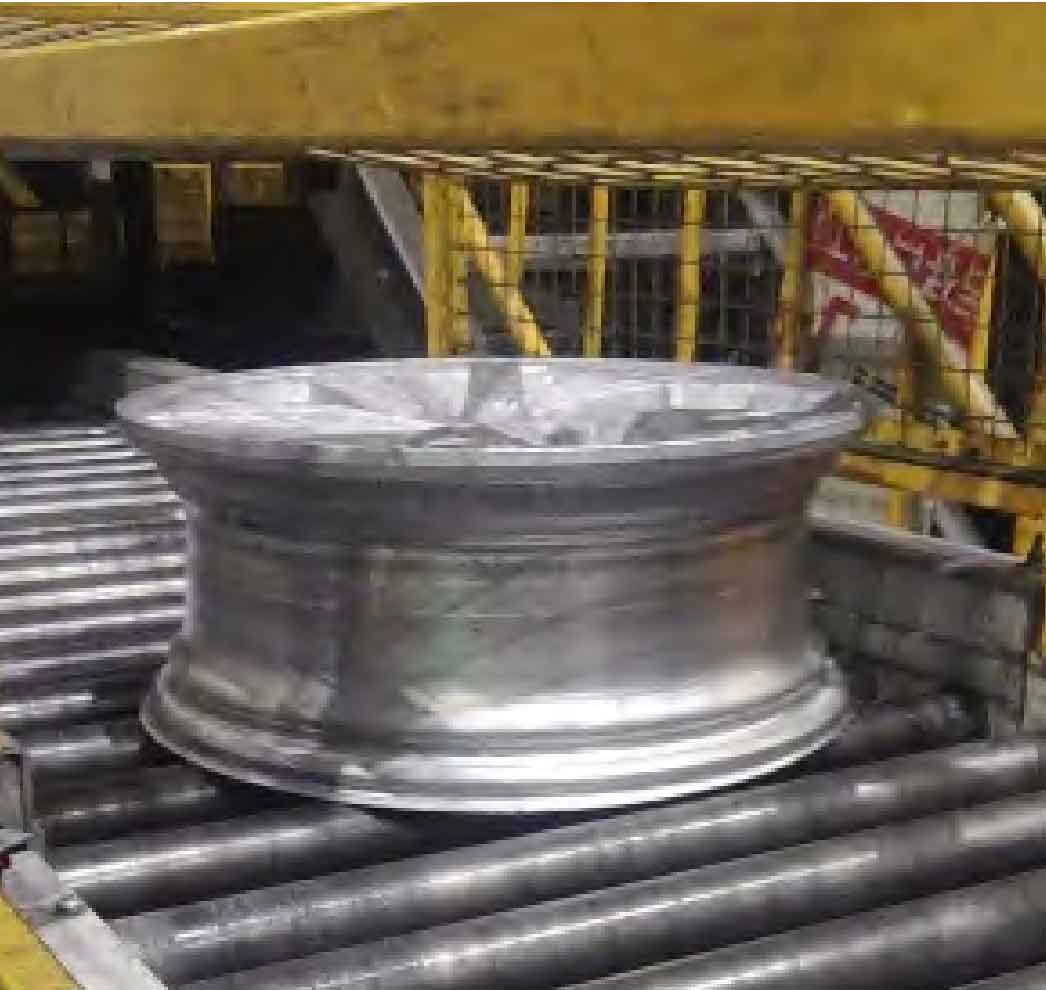The process flow of aluminum alloy wheel casting+spinning composite forming (referred to as casting and spinning): molten aluminum melting – wheel low-pressure casting – heating – rim spinning – heat treatment – machining.
Specifically, the aluminum alloy wheel casting and spinning technology is to first produce the wheel casting blank by low pressure casting. At this time, the spoke part of the wheel modeling surface has been formed, while the rim part is reserved thick, large and short blank; Then, in the hot state, the rim blank is spun with a spinning wheel to form a complete wheel rim; After spinning, the blank is subject to heat treatment, machining and surface coating to produce aluminum alloy wheels with complete shape. The process feature is that the short and thick rim blank with suitable metal content is prefabricated during casting, which shortens the overall filling and shrinkage path, widens the channel, and makes the casting process easier to control. The casting process is simpler than the ordinary casting process, so as to obtain a more dense casting blank; The rim blank is then spun to further compact the casting defects such as shrinkage porosity and porosity, and the structure is more compact, so that the rim and inner rim can obtain higher strength and toughness, and the fatigue and impact resistance are significantly improved.
Cast aluminum alloy wheels are made of A356 alloy (AlSi7Mg0.3), which is the same as low-pressure cast aluminum alloy wheels. This alloy is a material with good casting performance and relatively low cost of heat treatment and strengthening, and is mainly used in the manufacture of automobile structural parts. The ductility of the alloy at room temperature is poor, so it needs to be heated, and the metal in the hot state is easier to flow and form. Therefore, the selection of spinning temperature has a great influence on its forming and the forming quality of aluminum alloy wheels. The mechanical properties of the alloy at different temperatures were measured by high temperature tensile test. It is concluded that with the increase of temperature, the strength of the alloy decreases and the plasticity increases. Especially at 350 ℃, the plasticity increases sharply with the increase of temperature, and the strength also decreases rapidly. Therefore, the spinning temperature is generally above 350 ℃. At the same time, if the temperature is too high, the metal strength is too low, which is also easy to cause the reduction of the bonding degree between the blank to be spun and the spinning mold, and the insufficient support force of the seal layer at the spinning blank, which is very easy to cause the deformation of the front spokes of the wheel and the aluminum adhesion at the spinning wheel, affecting the spinning appearance quality and the life of the spinning wheel, and the high temperature metal flow is not easy to control during spinning. Therefore, the spinning forming temperature is generally controlled between 350~380 ℃.
The blank to be spun and cast is heated to 365 ℃ in the heating furnace, the manipulator is placed on the spinning core mold, the spinning core mold speed is set at 450 r/min, the spinning wheel 1 – 3 moves along the track line in the improved forming scheme, and contacts with the blank until the spinning forming is completed. 545 ℃ solution and 150 ℃ aging heat treatment (T6 heat treatment) diagram. 7 is the blank of special-shaped spinning wheel and wheel after hot spinning.


